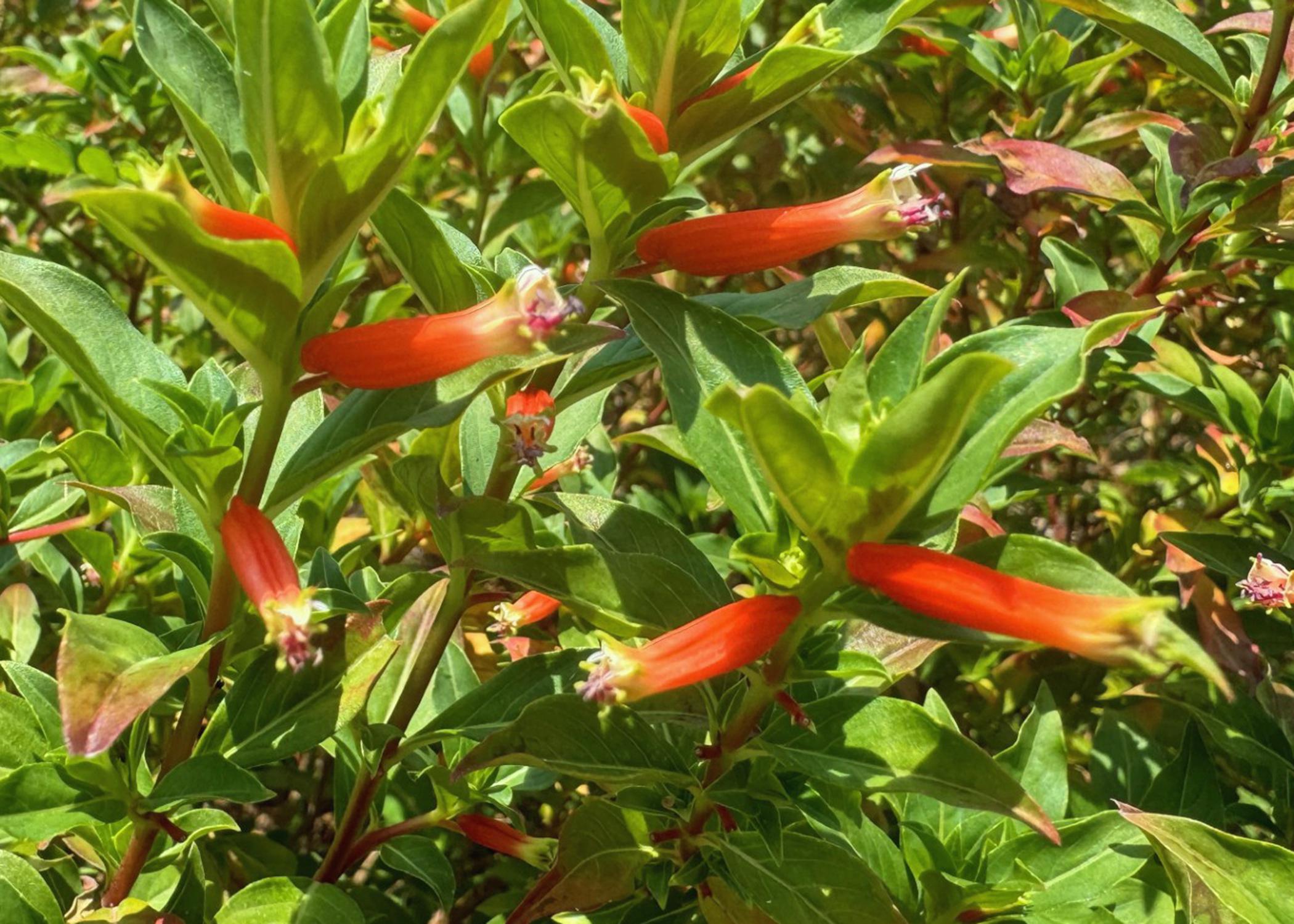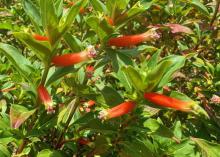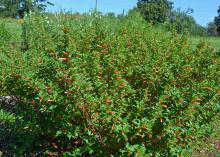Vermillionaire adds flash, color to landscape areas
If it seems like every plant in your garden is wilting in this summer’s heat, think about adding some Vermillionaire plants next year.
I recently saw some beautiful Vermillionaire plants at the trial garden of the Mississippi State University South Mississippi Branch Experiment Station in Poplarville. These plants were thriving in the summer heat.
Vermillionaire, also known as the firecracker plant, is a striking plant that puts on a show in gardens and landscapes with its vibrant-colored blooms. The slender, tubular flowers resemble tiny firecrackers with their brilliant orange-red hue.
Each bloom is about 1 to 2 inches long with a slightly flared, open end. These blooms appear in clusters at the tips of the stems, creating a dense display that seems to glow in the sunlight. The orange-red color serves as a powerful attractant for pollinators like hummingbirds and butterflies.
The petals are fused together, forming a smooth, elongated tube that contrasts beautifully with the dark, glossy green foliage. At the tip of each flower, a subtle light ring of color adds an extra layer of visual contrast.
The long-lasting flowers bloom profusely from spring through fall, ensuring a continuous splash of color in the garden. This extended blooming period, combined with the plant’s compact and bushy growth habit, makes Vermillionaire an ideal choice for adding both texture and color to the landscape.
The flowers stand up well to heat and humidity, which is especially important in our Southern climate.
You can care for Vermillionaire by planting them where they will get at least six hours of direct sunlight each day. Vermillionaire prefer well-drained soil with a slightly acidic to neutral pH, but these plants are pretty adaptable to various soil types as long as there’s good drainage to prevent root rot.
Water regularly during the hot summer months, but be careful not to overwater, allowing the soil to dry out slightly between waterings. If growing the plant in containers, always use pots with drainage holes to prevent standing water.
To keep Vermillionaire blooming robustly, feed in the spring with a balanced, slow-release fertilizer. I recommend supplementing this with a liquid fertilizer every four to six weeks during the growing season for an extra boost.
Pruning needs are minimal. Occasionally trim spent blooms and leggy stems to maintain its bushy shape and encourage new growth. While deadheading isn’t strictly necessary, I find that it improves the plant’s appearance.
I’ve noticed that Vermillionaire is relatively pest- and disease-resistant, but still keep an eye out for common garden pests like aphids or spider mites, treating them with insecticidal soap if needed. Ensuring good air circulation around the plant helps prevent any fungal issues.
In U.S. Department of Agriculture zones 8-11, treat Vermillionaire as a perennial, as it comes back year after year. In cooler climates, it’s often grown as an annual, but you can bring your plant indoors to overwinter it in a bright, sunny spot.
With its tropical flair, dynamic floral display, and easy care requirements, Vermillionaire is a standout plant in the garden and landscape.





